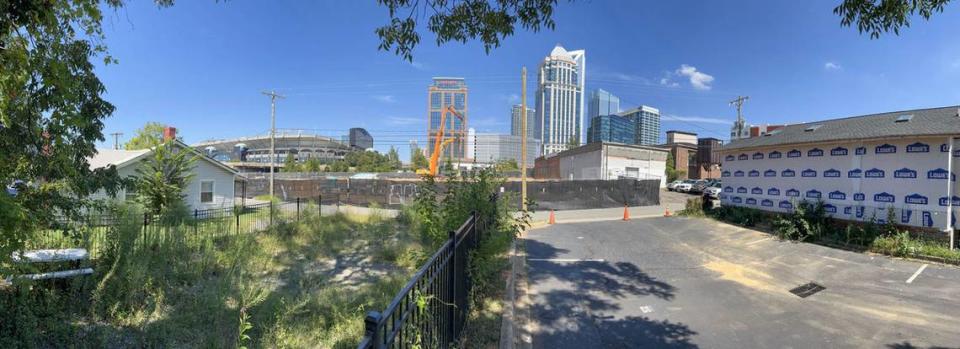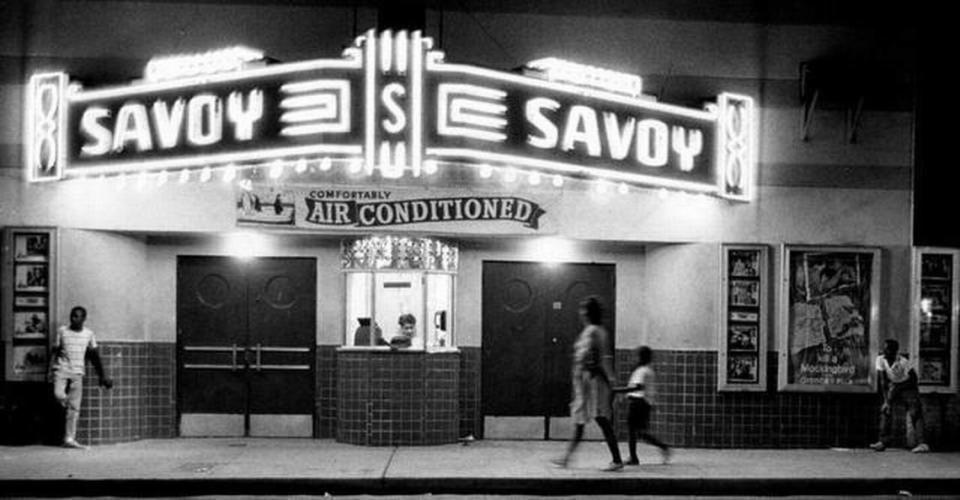You think Charlotte has changed a lot? We asked a 91-year-old native what he thinks.
Still Standing
A beloved 1917 Charlotte bungalow is up for recognition. Here are 8 reasons why it matters.
You think Charlotte has changed a lot? Try asking a 91-year-old native what he thinks.
Use these resources in Charlotte to help track your personal Black history
Tell us your Charlotte generational stories, your tall tales, your family history.
Like most metropolitan cities across the country, Charlotte is rapidly growing and constantly evolving. So much so that at times, we as native millennial Charlotteans barely recognize the city we grew up in just 30-40 years ago.
We’ve gone from a few tall buildings and staple neighborhoods to now having an ever-changing skyline and newly renamed districts on the regular. It’s bittersweet to see our hometown go through so many changes.
And if we are feeling this way after just a few decades, what must it look and feel like for our elderly natives?
I recently had the chance to sit down with my 91-year-old grandfather, Everett Taylor Sr., to not only learn more about the Charlotte neighborhoods he grew up in, but to also get an understanding of how it feels to see the city he once knew change so drastically.
My grandfather was born here in Charlotte in 1930. He spent his early years living on West Dunbar Street, between Morehead and Mint streets, before his parents moved them to Church Street — where the Diocese of Charlotte currently stands.
“We lived at 219 W. Dunbar St. in a tiny shotgun home with no electricity, and our bathroom was outside,” the elder Taylor told me. “There were no paved roads in our neighborhood at the time, only dirt ones. When we moved to Church Street, the road was paved, but the paving didn’t run all the way down Church Street.”

At that time, the city was only about 10-12 blocks each way from “the square” — a nickname often used by natives to describe the intersection of Trade and Tryon streets. Outside the perimeter, you were no longer considered to be within the city limits.
“Charlotte wasn’t a big place at all. There may have only been about 90,000 people.” Now, there are about 900,000.
RELATED: He’s spent 40 years looking for people — both Black and white — who share his last name
When my grandfather was around 11 years old, my great-grandparents moved the family to Charlotte’s majority-Black Cherry community — a historic neighborhood that still exists today near Metropolitan. He lived there until around the age of 22, and rented a home of his own in Cherry once he and my grandmother married.
“I was so happy when we moved to Cherry. That was the first time I saw children playing on a playground, and it brought me so much joy.”

Visiting Charlotte’s Brooklyn neighborhood
Taylor recalls often visiting the local businesses in Charlotte’s once thriving Brooklyn neighborhood — a district considered to be the equivalent of Tulsa’s Black Wall Street.
“I loved Brooklyn,” he shared. “It had everything you could think of. Black lawyers, doctors, cafés, entertainment. Everything. I would go with my brothers to the movie theater. A movie only cost a nickel or dime then.”

In the mid-1960s, most of the homes and businesses in Brooklyn were destroyed due to a controversial urban renewal project led by the federal government — forcing many Black residents to disperse to other parts of the city. Today, the only remaining traces of the historic neighborhood are three buildings that stand along South Brevard and Third streets.
“When they tore Brooklyn down, it was very sad. It was our place to go and be free. And although there was segregation at that time, we often appreciated it as Black people because we knew where we were safe to go and do as we please. But, we also knew there wasn’t much we could do about it, too. So, we just dealt with it and adjusted.”
Sharing Charlotte’s history keeps it alive
During the conversation, I paused to ask my grandfather why he felt it was important for him to share his life and this history with me.
“Well, a lot of the things that I saw as a boy, many people today wouldn’t know about or believe,” he said. “It’s important for us as elders to share this history because it’s how we keep it alive and how we keep passing it down through our families.”
There are so many other great stories and memories he shared with me, not only on this day, but during our regular conversations in general. As he continues to age, I understand the importance of documenting our time together, so that I can do exactly as he said — share these stories with my children in hopes that they will do the same. And, I encourage each of you to do the same with any elders you may have in your life, too.


 Yahoo Movies
Yahoo Movies 